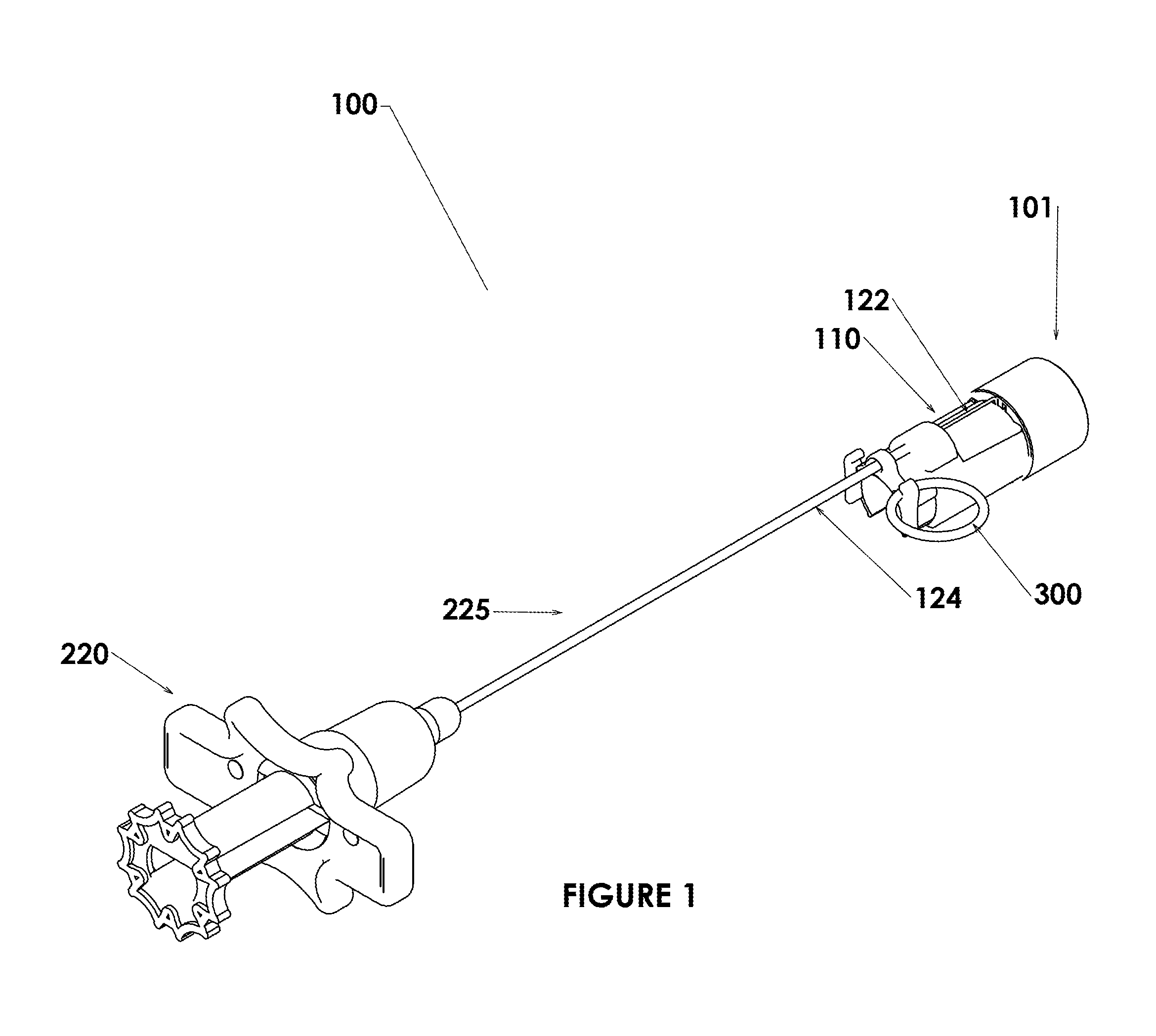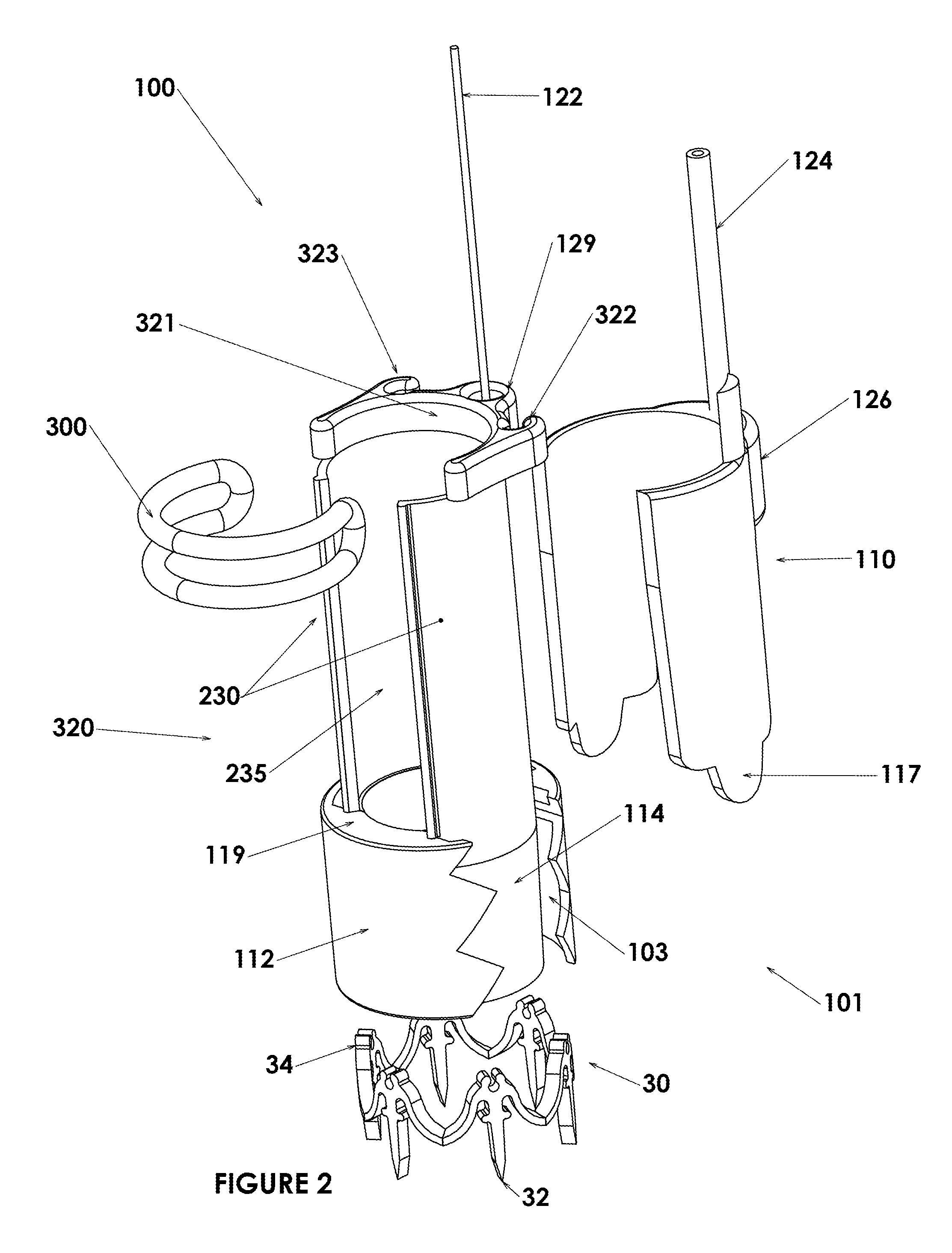Adapter for Attaching Devices to Endoscopes
a technology for attaching devices and endoscopes, which is applied in the direction of surgical staples, mechanical instruments, diagnostic recording/measuring, etc., can solve the problems of difficult to use such a system on endoscopes which have been repeatedly rested or repaired, the stiction size of an instrument which may be used in a specific procedure is generally impossible to predict, and the instrument complex and expensive. , to achieve the effect of increasing the stiction property, increasing the force, and increasing the sti
- Summary
- Abstract
- Description
- Claims
- Application Information
AI Technical Summary
Benefits of technology
Problems solved by technology
Method used
Image
Examples
Embodiment Construction
[0085]Particular embodiments of the invention are described in detail to enable the reader to understand the invention. In FIG. 1, an endoscopic instrument 100 is shown. This particular endoscopic instrument, generally described in priority document U.S. 61 / 199,606, is designed to deliver a tissue clip to close an opening created during surgery, but the apparatus and method for affixing the clip delivery assembly to an endoscopic instrument are more general.
[0086]In FIG. 1, the device 100 has a handle assembly 220, with actuating means 225 connecting it to a deployment assembly 101. In this embodiment, the actuating means 225 comprise a wire sheath 124 and a wire 122. The wire sheath 124 is connected to pusher 110, which in this embodiment pushes a tissue-affixing clip out of assembly 101. The securing means 300 is in this instance an elastic band, shown in a non-securing position. The length of the actuating means 225 will be selected to be compatible with the length of the particu...
PUM
 Login to View More
Login to View More Abstract
Description
Claims
Application Information
 Login to View More
Login to View More - R&D
- Intellectual Property
- Life Sciences
- Materials
- Tech Scout
- Unparalleled Data Quality
- Higher Quality Content
- 60% Fewer Hallucinations
Browse by: Latest US Patents, China's latest patents, Technical Efficacy Thesaurus, Application Domain, Technology Topic, Popular Technical Reports.
© 2025 PatSnap. All rights reserved.Legal|Privacy policy|Modern Slavery Act Transparency Statement|Sitemap|About US| Contact US: help@patsnap.com



